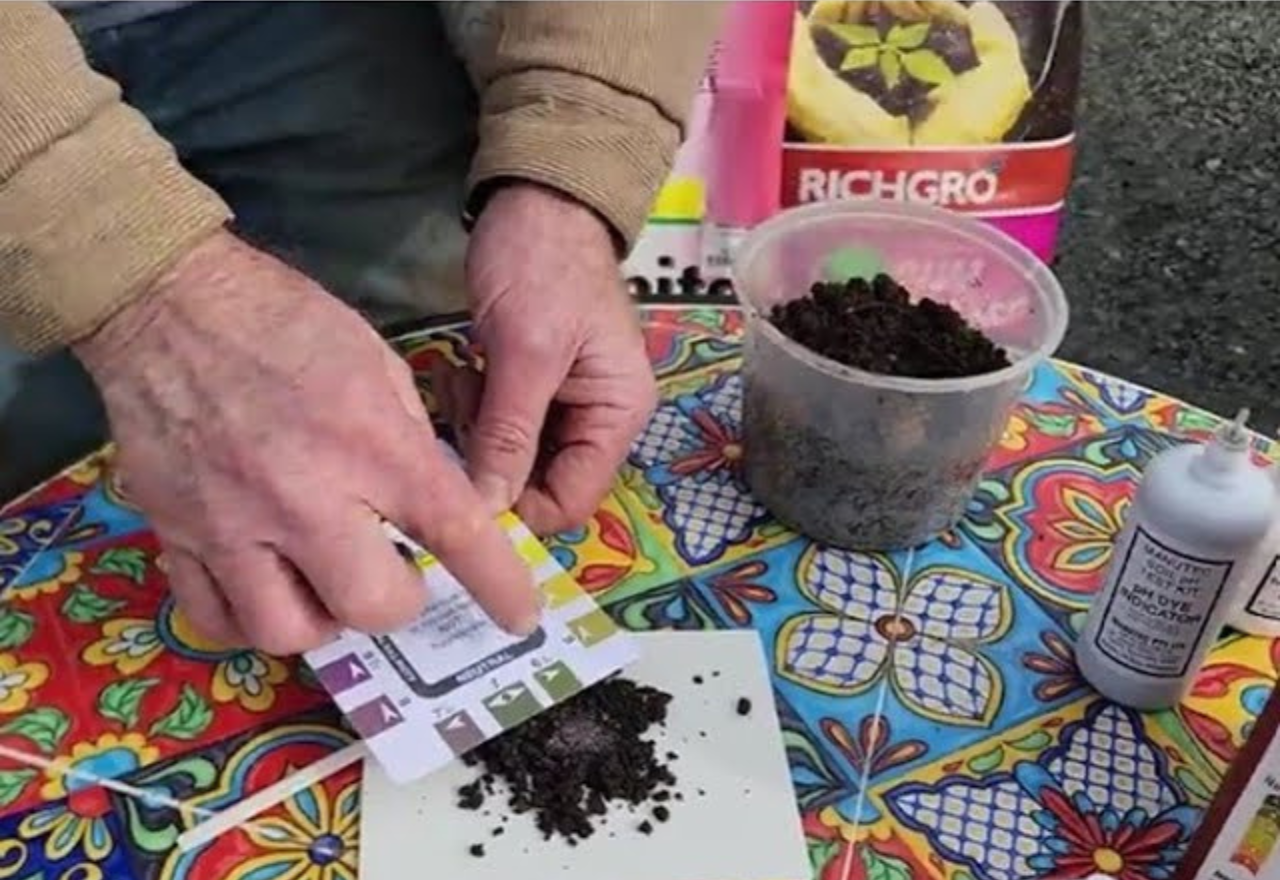Digging into the secrets of soil pH
Lleyton Hughes
08 August 2025, 1:00 AM
 A still from the upcoming YouTube video where John Gabriele demonstrates how to measure your pH levels
A still from the upcoming YouTube video where John Gabriele demonstrates how to measure your pH levelsThe Bugle’s gardening column, featuring local expert John Gabriele, will help you get the best out of your patch all year round.
Following on from last week’s discussion on soil texture and structure, this week I’m sharing his insights into the secrets of soil pH.
Why is soil pH important?
Soil pH actually tells us the level of positively charged hydrogen ions in the soil.
In simple terms, it affects how nutrients are released and retained by the soil. We are measuring the acidity and alkalinity of the soil.
If we know the pH, we can adjust it to ensure nutrients are available at the right levels for our plants to thrive.”
How do you test soil pH?
It’s very simple. You can buy a colourimetric test kit for around $30. Just take a small soil sample, add a few drops of universal indicator, and gently mix to ensure good contact with all the soil particles.
Once mixed, sprinkle barium sulfate over the top. This will trigger a chemical reaction, changing the soil’s surface colour. Then, compare that colour to the included chart to determine your pH level.
A pH of 7 is neutral. Below 7 is acidic, and above 7 is alkaline - or what we call a 'sweet' soil.

Adjusting your soil pH
To lower the pH, I recommend ameliorants like sulfur, which gradually acidifies the soil.
Once it reaches around 6.5, most nutrients become available for plant uptake.
On the other hand, if your soil is acidic - with a pH below 6 - and the plants you are rowing require a sweeter, more alkaline soil, so use a liming agent.
To do this, apply at approximately 60g per square metre and cultivate into the soil.
You could use garden lime, which will raise the pH quite quickly. But I’ve found it's a bit of a shotgun response - it works harshly.
I prefer dolomite, which is gentler and acts more slowly. Plus, it contains additional magnesium and calcium carbonate.
For those looking to improve clay soil structure without affecting pH, gypsum is a great option.
It’s calcium sulfate, so it won’t alter the pH, but it will improve the structure of your clay soil.
A tip for colour-blind gardeners
Not everyone can use colour-based testing kits - particularly those who are colour-blind.
If that is the case, take the soil sample to your local nursery, where staff can test it for you.
Understanding and adjusting your soil’s pH is a simple step that can make a big difference in the health and success of your garden.
Always apply ameliorants slowly and ensure to measure pH at the end of each growing season, adjusting as necessary.
NEWS




